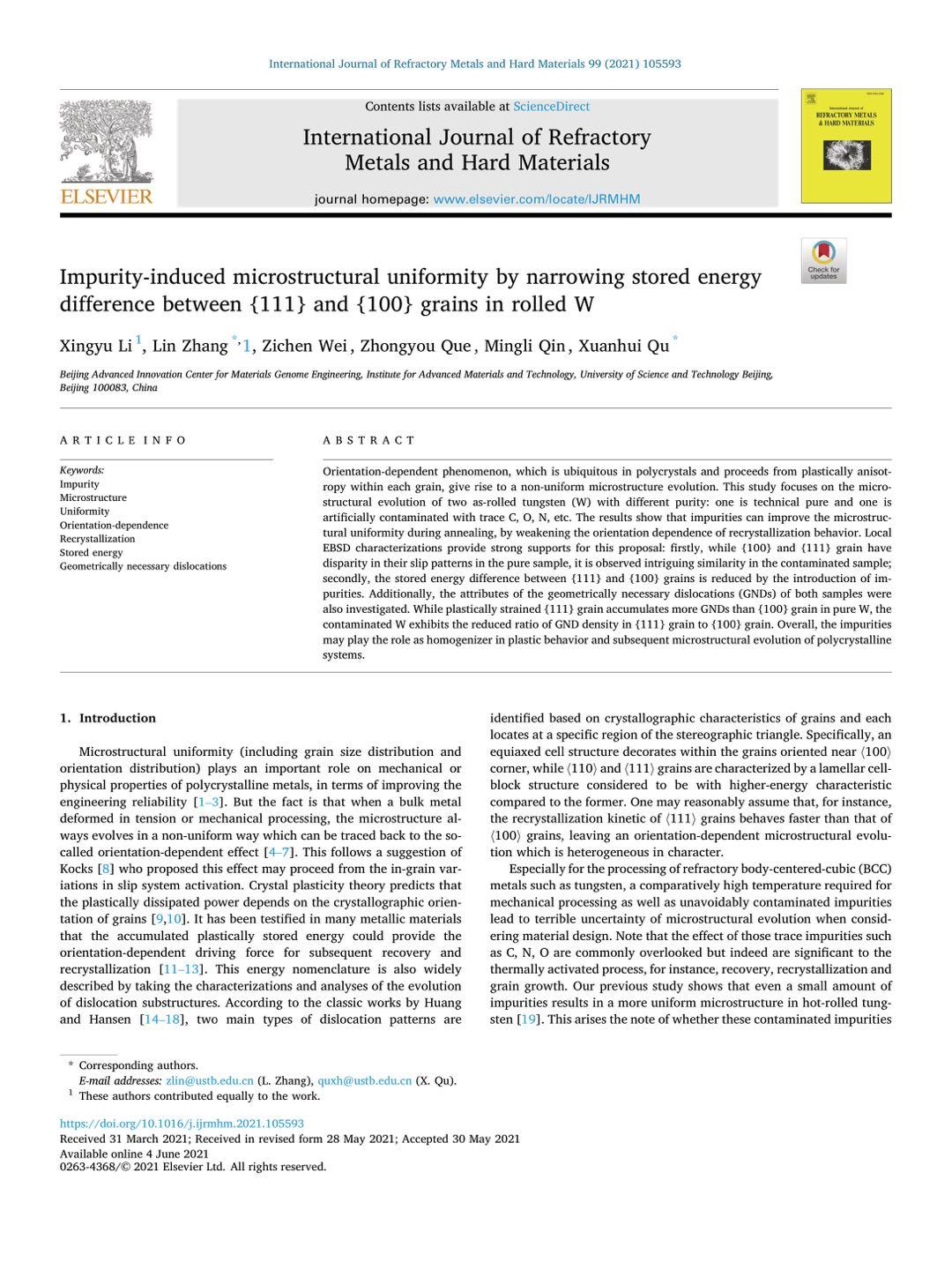Orientation-dependent phenomenon, which is ubiquitous in polycrystals and proceeds from plastically anisotropy within each grain, give rise to a non-uniform microstructure evolution. This study focuses on the microstructural evolution of two as-rolled tungsten (W) with different purity: one is technical pure and one is artificially contaminated with trace C, O, N, etc. The results show that impurities can improve the microstructural uniformity during annealing, by weakening the orientation dependence of recrystallization behavior. Local EBSD characterizations provide strong supports for this proposal: firstly, while {100} and {111} grain have disparity in their slip patterns in the pure sample, it is observed intriguing similarity in the contaminated sample; secondly, the stored energy difference between {111} and {100} grains is reduced by the introduction of impurities. Additionally, the attributes of the geometrically necessary dislocations (GNDs) of both samples were also investigated. While plastically strained {111} grain accumulates more GNDs than {100} grain in pure W, the contaminated W exhibits the reduced ratio of GND density in {111} grain to {100} grain. Overall, the impurities may play the role as homogenizer in plastic behavior and subsequent microstructural evolution of polycrystalline systems.
